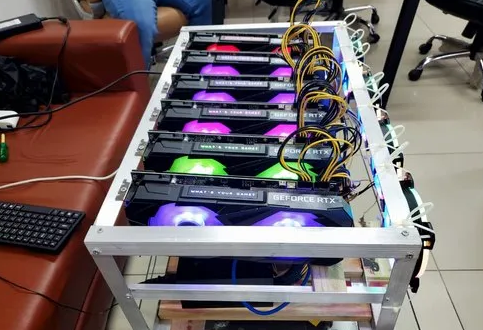A Comprehensive Guide to Ethereum Mining: How to Start Mining Ether
Introduction:
Ethereum, the second-largest cryptocurrency by market capitalization, not only serves as a digital currency but also powers a decentralized computing platform that enables the execution of smart contracts and decentralized applications (DApps). Ethereum mining plays a pivotal role in securing the network and validating transactions while earning rewards in the form of Ether (ETH), the native cryptocurrency of the Ethereum blockchain. In this comprehensive guide, we will explore the steps involved in starting your Ethereum mining operation.
Understanding Ethereum Mining:
Ethereum mining involves the process of validating transactions and adding them to the Ethereum blockchain. Miners compete to solve complex mathematical puzzles using computational power, with successful miners being rewarded with newly minted Ether and transaction fees. Ethereum currently utilizes a proof-of-work (PoW) consensus mechanism, although it is expected to transition to proof-of-stake (PoS) with the Ethereum 2.0 upgrade.
Step-by-Step Guide to Ethereum Mining:
1. Selecting Mining Hardware:
Choose GPU (Graphics Processing Unit) mining hardware optimized for Ethereum mining. Research GPUs based on factors such as hash rate, power consumption, and cost-effectiveness. Popular choices include AMD Radeon and NVIDIA GeForce graphics cards.
2. Setting Up a Mining Rig:
Assemble your mining rig by connecting GPUs to a motherboard with sufficient PCI-E slots. Install necessary hardware components such as CPU, RAM, and storage. Ensure adequate cooling to prevent overheating, considering factors such as airflow and ventilation.
3. Obtaining an Ethereum Wallet:
Create an Ethereum wallet to store your mined Ether securely. Choose from various wallet options, including hardware wallets, software wallets, or online wallets. Safeguard your wallet’s private keys and consider using multi-factor authentication for added security.
4. Choosing Mining Software:
Select mining software compatible with your hardware and operating system. Popular Ethereum mining software includes Ethminer, Claymore’s Dual Miner, and PhoenixMiner. Configure the mining software with your Ethereum wallet address and mining pool details.
5. Joining a Mining Pool:
Joining a mining pool increases your chances of earning consistent rewards by combining computational resources with other miners. Research and choose a reputable mining pool based on factors such as pool fees, payout methods, and community reputation.
6. Configuring Mining Software:
Configure your chosen mining software with your Ethereum wallet address and mining pool details. Fine-tune mining parameters such as GPU intensity, overclocking settings, and fan speeds for optimal performance and efficiency.
7. Commencing Mining Operations:
Launch your mining software to initiate Ethereum mining. Monitor your mining operation regularly to ensure stability, efficiency, and profitability. Keep track of hardware temperatures, hash rates, electricity consumption, and mining rewards.
8. Managing Electricity Costs:
Be mindful of electricity costs associated with mining operations, as they can significantly impact profitability. Optimize mining efficiency by selecting energy-efficient hardware, implementing cost-effective cooling solutions, and leveraging renewable energy sources where feasible.
9. Tracking Mining Rewards:
Monitor your mining rewards using mining pool dashboards or Ethereum blockchain explorers. Understand the payout schedule, minimum payout threshold, and transaction fees associated with your chosen mining pool.
10. Staying Informed and Adapting:
Stay updated on developments in Ethereum mining, including network upgrades, algorithm changes, and mining profitability. Engage with mining communities, forums, and social media groups to exchange knowledge, insights, and best practices with fellow miners.
Conclusion:
Ethereum mining presents an opportunity for enthusiasts and investors to actively participate in securing the Ethereum network while earning rewards in the form of Ether. By following this comprehensive guide, aspiring miners can navigate the intricacies of Ethereum mining and embark on their mining journey with confidence. As Ethereum continues to evolve and undergoes the transition to Ethereum 2.0, miners must adapt to changes in technology, consensus mechanisms, and market dynamics to maintain profitability and sustainability in the long term.
For more information related Crypto, Checkout over website Cyptogole
For more information related other topics Newsreap



